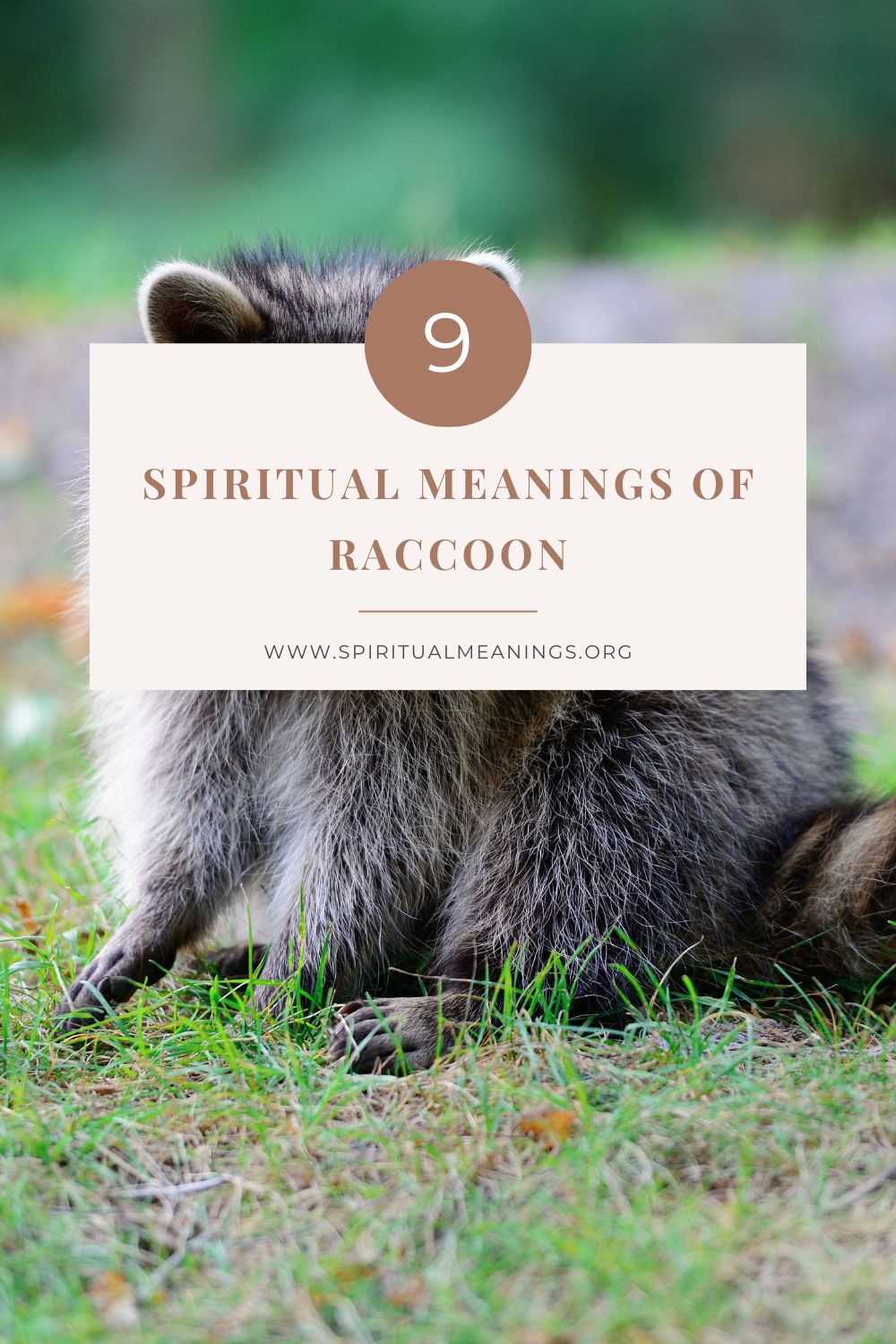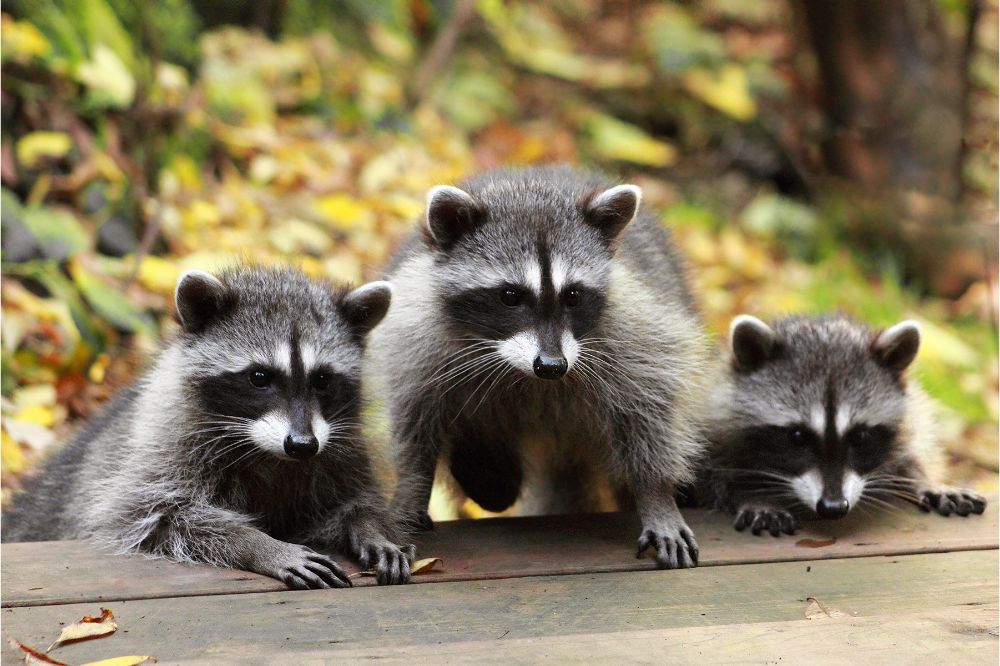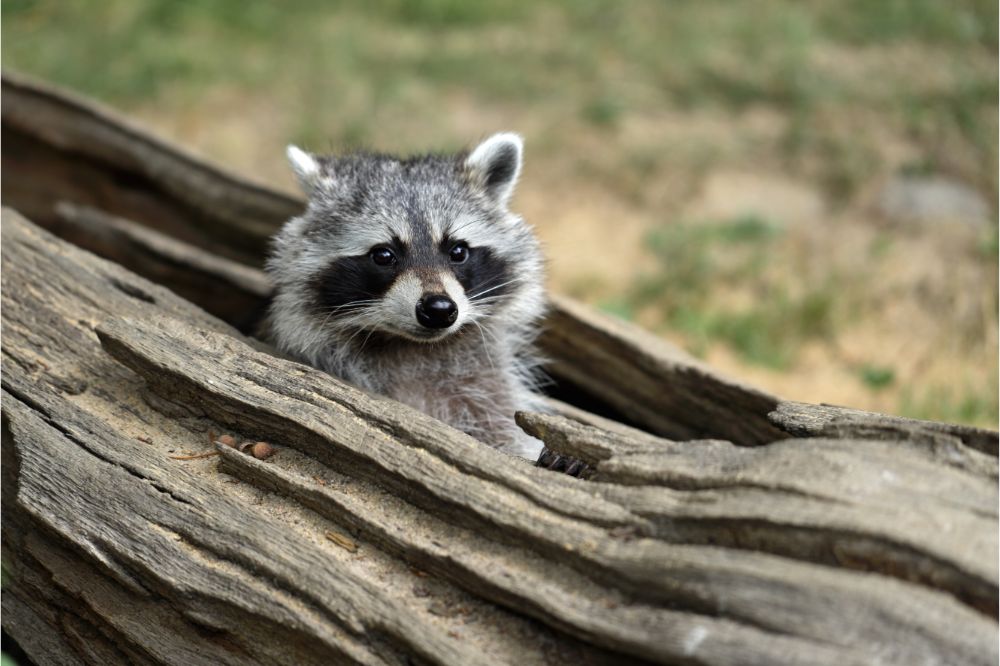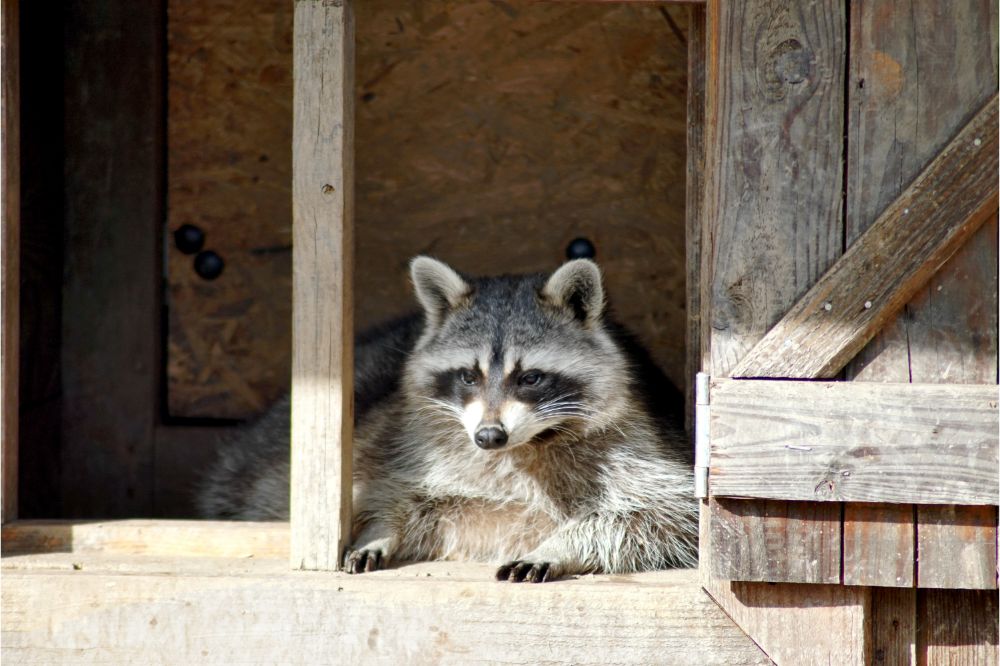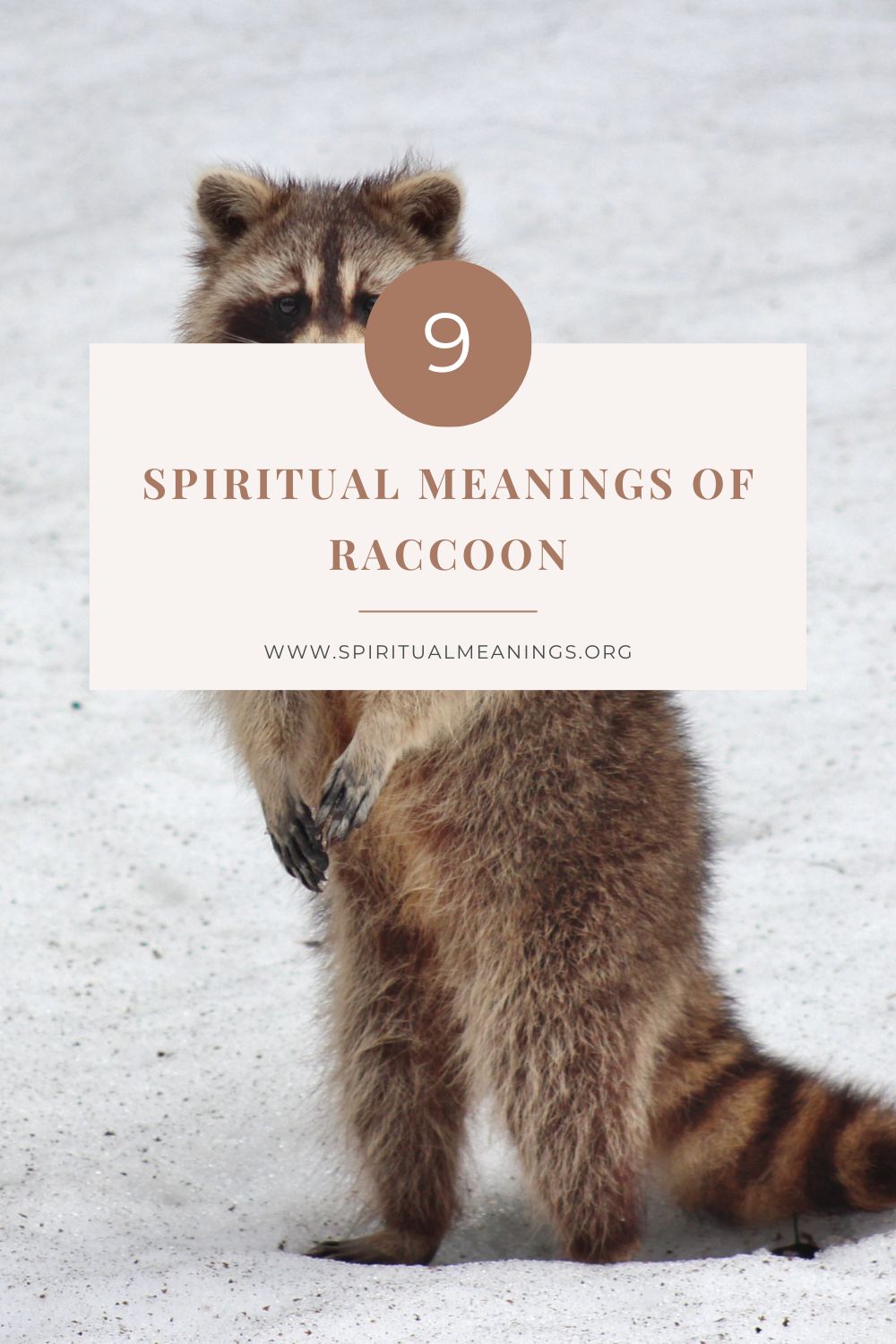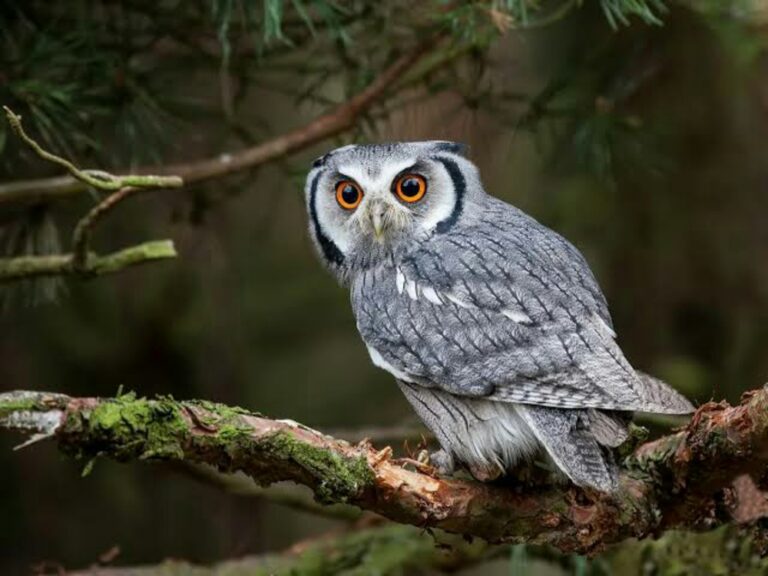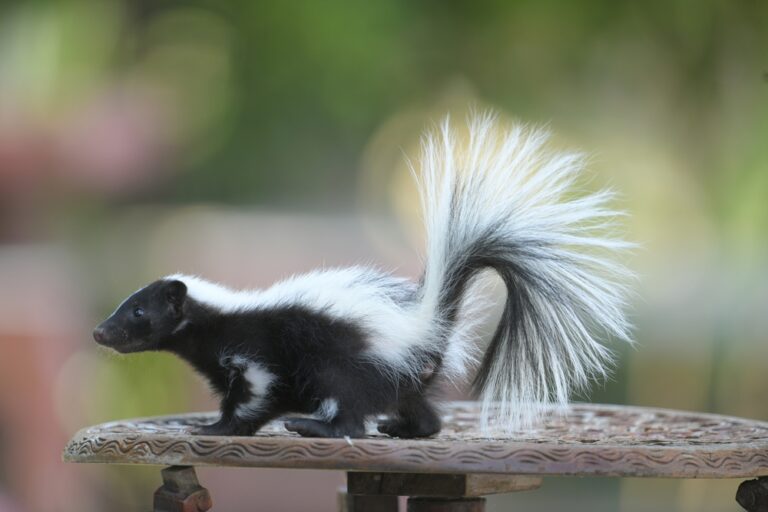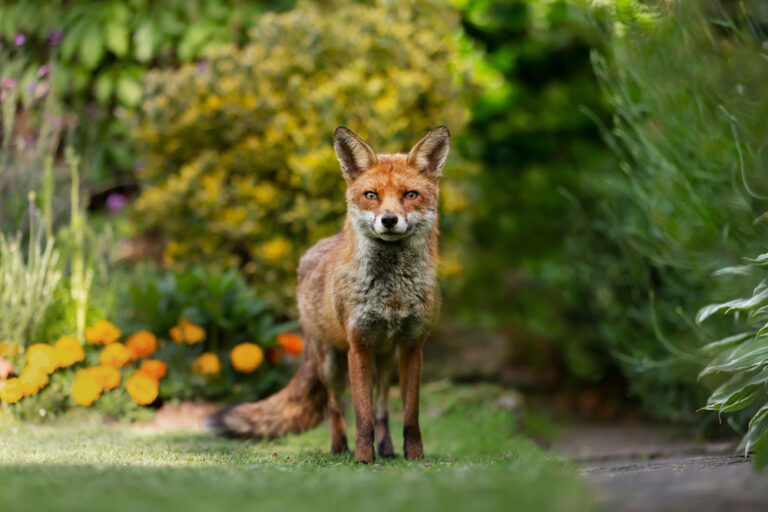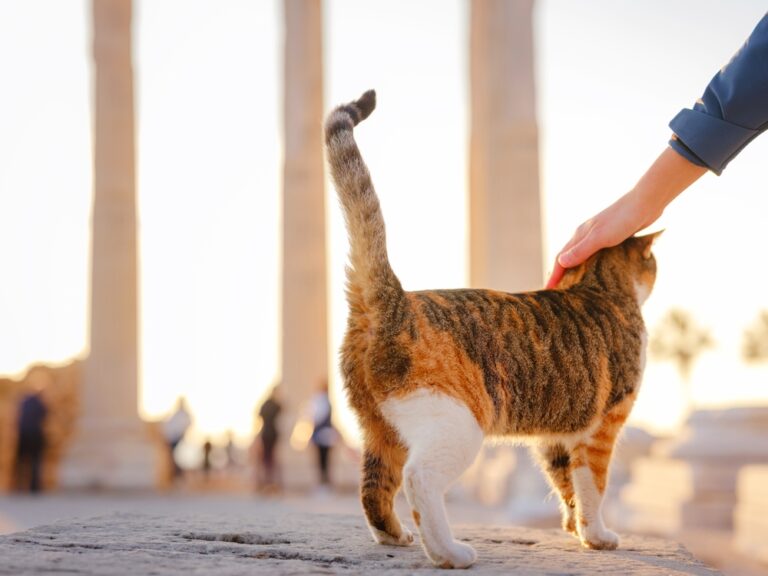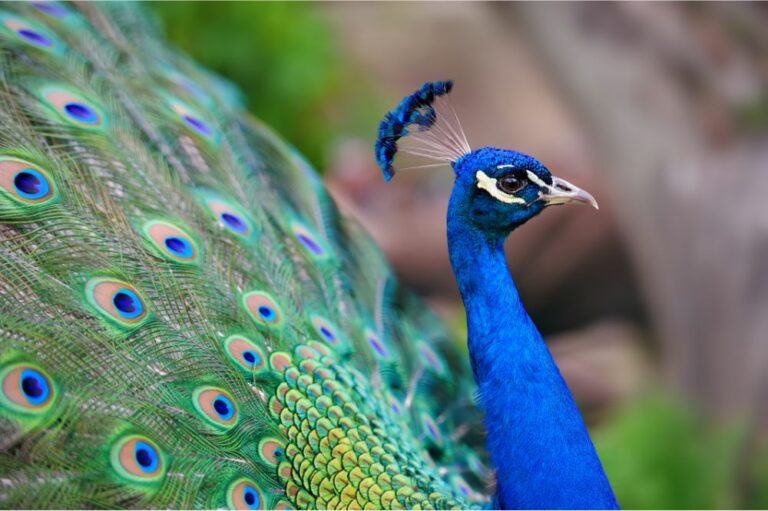Raccoons are undeniably cute, even though they can sometimes be highly annoying too – but they are also rich in symbolism and spiritual meaning.
So for anyone who wants to learn more, in this post, we tell you everything you need to know about raccoon symbolism – as well as what it means if you see one in real life or in a dream.
What does a raccoon symbolize? (spiritual meanings)
Before we look at raccoon symbolism, let’s take a moment to talk about the characteristics of these animals and the associations we have with them.
Perhaps when we think of raccoons, especially for people who live in urban areas, the first image that comes to mind is probably that of raccoons rummaging through the garbage on the lookout for a tasty morsel to eat.
This might be frustrating or annoying for us, but it shows how raccoons are highly adaptable creatures that are easily able to make do with whatever is available to them. They’re not fussy, which makes them natural survivors.
Coupled with this is their high degree of intelligence. Tests have shown that raccoons are extremely smart creatures, only slightly less so than monkeys.
They can work out how to open locks, and it’s even been demonstrated that they retain information like this for up to three years – so intelligence is an important part of what makes raccoons the animals they are.
Their appearance is striking too, especially since they appear to be wearing a mask like some kind of robber, and as we will see, this means they have been associated with thievery and trickery.
Something that perhaps fewer people are aware of is their tendency to “wash” their food.
In fact, they don’t really wash it, but they turn it over in their paws before they eat it, and because they were often observed doing this close to rivers, it was once thought that these animals were extremely particular about food hygiene!
Raccoon spiritual meanings according to different cultures
Now let’s have a look at the symbolism raccoons have according to various cultures that live alongside them.
Native Americans
Raccoons are native to North America, so it’s no wonder that they feature prominently in the traditions and the beliefs of many Native American tribes.
Although Native American beliefs vary greatly from one area to another and between the different tribes, a common feature in much of Native American belief is respect for nature and the placing of great importance on the natural world and its animals.
That such a distinctive creature as the raccoon is a key figure in many traditions is unsurprising, and the raccoon’s intelligence was often emphasized. Like the crow and the coyote, the raccoon was also often seen as a trickster or a shapeshifter.
Here are some of the specific beliefs some of the various tribes had about the raccoon.
-
Sioux
According to the Sioux, the raccoon is closely connected to the spirit world. The Sioux also tell an interesting story of how the raccoon caught crayfish to eat.
One day, the raccoon was extremely hungry but had no food to eat, so he dug around under a log until he found some maggots.
He took the maggots and placed them over his eyes and lay down next to the river. A crayfish saw him there, and because of the maggots, he thought the raccoon was dead – so he called to his whole family to come and enjoy a big meal.
However, when the crayfish all arrived to eat the raccoon, the raccoon jumped up and ate the crayfish instead.
-
Choctaw
According to Choctaw belief, the raccoon was a trickster but also a teacher, often playing tricks on the wicked to teach them lessons, making them see the errors of their ways.
They also have a story about the raccoon and the opossum that follows a similar theme.
The raccoon and the opossum were great friends, but the opossum was jealous of the raccoon’s fluffy ringed tail.
One day, he asked how he could get a tail like the raccoon’s, so the raccoon told him to take some strips of bark and wrap them around his tail. Then, with the bark rings in place, the raccoon told him to put his tail in the fire.
However, when he pulled his tail out and removed the bark, his tail was just a singed mess, so he complained that he still didn’t have a raccoon’s tail.
The raccoon replied that of course he didn’t have a raccoon’s tail – because he wasn’t a raccoon! And at once, the opossum saw that he should have been content with what he already had rather than wanting more.
In this way, the raccoon’s trick taught the opossum a valuable lesson.
-
Winnebago
The Winnebago tribe believed that the raccoon was a shapeshifter that often turned himself into a fish. For this reason, they saw the raccoon as a spirit of both the forest and the water.
The raccoon was also seen as a celestial spirit and was connected to stars with tails – in other words, shooting stars and comets.
-
Natchez
In Natchez belief, a great tree connected the three worlds, the world of the spirits, the world of the Earth and the underworld.
Eagles and hawks belonged to the realm of the spirits while snakes were part of the underworld – but both humans and raccoons belonged to the Earthly realm, so the two had a special connection and affinity.
- Abenaki and Penobscot
The Abenaki and Penobscot tribes tell a story of how the raccoon got his “mask”.
Once upon a time, two blind men lived in the forest and helped each other with various tasks. They were happy living together because they knew that the creator, Glooscap, would always watch over them.
One day, however, one of the men took a bucket down to the river to fetch some water. When he got there, the raccoon was there too, and because the raccoon had nothing better to do, he decided to play a joke.
When the man lowered the bucket to fill it with water, the raccoon instead filled it with sand.
Then when the man took it back, his friend tried to take a cup of water to drink but found the cup was filled with sand. This caused the men to argue since one thought the other had been too lazy to go down to the river.
Another time, one of them was cooking meat, but the raccoon came and stole some pieces.
When the meat was ready, the man called to his friend and said the food was cooked and then took his own pieces to eat. However, when the other man arrived, he found there was nothing left and accused his friend of eating everything, again causing an argument.
When Glooscap saw what was happening, he caught the raccoon and punished him by marking his face and tail with a charred stick so that from then on, everyone would see that he was a trickster and thief.
-
Menominee
The Menominee are another tribe that saw the raccoon as a teacher. One of his valuable lessons was that we should never distrust our closest friends, good advice that many people would do well to remember!
-
Dakota
The Dakota believed the raccoon had special powers because his markings were similar to the face paints they used during rituals they performed to contact spirit beings.
Why the raccoon washes his hands? (spiritual meanings)
Another Native American story explains why the raccoon washes his hands.
One day, the raccoon was out looking for a meal, and at first, he couldn’t find anything to eat. He scavenged a few mussels from the shore, but he was unable to surprise any birds or lure any squirrels down from their trees so he could catch them.
He also met a family of skunks, but he couldn’t catch those because the father was ready to defend them with his spray, so the raccoon apologized for disturbing them and carried on his way.
As he walked, he caught the sweet scent of honey in the air, which led him to a tree. He began licking up the honey, but then he felt a pain in his nose as a bee stung him. Then there was another in his cheek. And then another in his hand, and more and more.
He ran from the tree and rolled in the ground, covering himself in leaves, but nobody was willing to help him because earlier he had been out trying to eat everybody.
Finally, he arrived at the river and found relief by washing himself in the cool water, cleaning off the sticky honey and the leaves. This story explains why, even to this day, raccoons can be spotted by the water’s edge washing their hands and their food.
Aztecs
The Aztecs also believed the raccoon had special spiritual powers, and they especially valued the female raccoon’s commitment to bringing up her young. For this reason, raccoons symbolized the role of wise women in society.
Japan
Although raccoons aren’t indigenous to Japan, an animal known as the tanuki is, and it’s surprisingly similar to the raccoon in both appearance and behavior.
What’s even more surprising is that the tanuki also occupies a very similar place in Japanese folklore to the place of the raccoon in North American beliefs – tanuki are also seen as shapeshifters, trickers and masters of disguise.
What does it mean if you see a raccoon? (spiritual meanings)
If you live in North America, it is quite possible that you will encounter raccoons from time to time, but what does it mean?
Little happens by chance, and if you see a raccoon – either in real life or in a dream – it could be a message from the spirit world, so you should try to interpret what the message means to you. Here are some of the most common possibilities.
1. Be ready to be resourceful
As we have seen, raccoons are characterized by their resourcefulness, and if one visits you, it can be a reminder to be ready to be more resourceful yourself.
Use whatever you have to hand rather than waiting until you have everything you need to succeed – and act now rather than waiting for the perfect moment because the perfect moment may never come.
2. Use your intelligence to solve problems
Raccoons are smart creatures that can use their intelligence to solve problems – so if you are facing a problem of your own and see a raccoon, it can be a reminder to use your brain rather than your heart or emotions to find the best solution.
3. Be ready to learn something new
Since raccoons are always learning and willing to pick up new skills, they can remind us to always be ready to do the same – because new skills and abilities can often bring new opportunities.
4. Change your behavior or be ready to be flexible
As a versatile, adaptable animal, raccoons can often remind us that sometimes we need to be flexible to succeed. Are you sticking to a position too stubbornly and refusing to budge? Then perhaps seeing things from the other person’s side might help resolve the issues.
5. On the bars of a gate – expect company
Seeing a raccoon on the bars of a gate is said to predict that you will receive company.
6. In an unusual place – expect travel
If you see a raccoon somewhere unusual, it may tell you about an upcoming journey.
7. A fat raccoon – predicts a long, cold winter
Seeing a fat raccoon tells you to expect a long, cold winter.
8. Feeling anxious in a dream – something is being taken from you
If seeing a raccoon in a dream makes you feel anxious, it may be telling you that somebody is stealing something from you, so you need to beware.
9. Feeling happy in a dream – be at ease with making adjustments
If you feel happy about seeing a raccoon in your dream, it may mean that change is coming – and that you are ready to accept it willingly.
A trickster that represents intelligence, resourcefulness
According to many Native American tribes, the raccoon is a trickster, but this intriguing animal also represents things like intelligence, resourcefulness and adaptability.
If you see one, either in a dream or in real life, it can bring you an important spiritual message – and by thinking deeply about what you saw and trusting your intuition, the true spiritual meaning of the message will be revealed to you.

